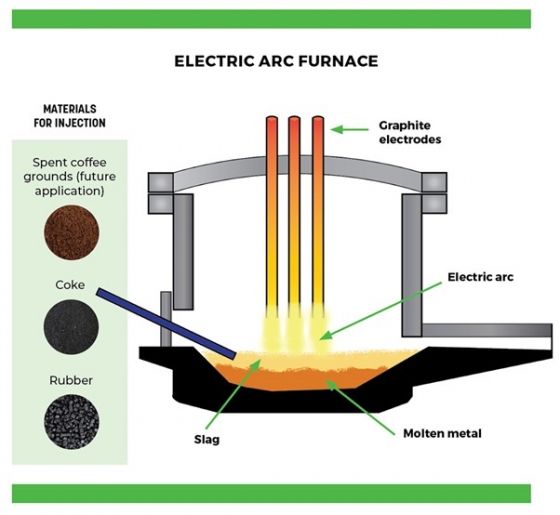The UNSW SMaRT Centre has had published three scientific papers that show that waste coffee grounds and hydrogen from other wastes can be used as part of its patented Green Steel technology.
In the latest research breakthroughs on SMaRT@UNSW’s Green Steel Polymer Injection Technology (PIT), industrial trials with partner Molycop have shown various wastes can be used to more sustainably make steel in electric arc furnaces.
Wastes including plastic and coffee grounds now join waste rubber tyres as alternative sources of coke and coal as previously vital ingredients as carbon sources for steel making, and can provide the element hydrogen which vastly improves the efficiency and energy required for the manufacturing process.
UNSW SMaRT Centre Director, Professor Veena Sahajwalla said: “Steelmakers have to meet the demands of quality requirements. The metal that gets produced doesn’t have any memory of whether the parent material that went in was coal or coffee.
“Steelmakers have to meet the demands of quality requirements,” lead researcher Veena Sahajwalla said. “The metal that gets produced doesn’t have any memory of whether the parent material that went in was coal or coffee.

“It gives you the kind of productivity requirements that any commercial operator will want,” Ms Sahajwalla said. “We’ve proven that it does the job at a comparable level, so we’re going to be at least sitting at an equivalent performance. If I’m going to be so bold and brave, I’d love to show that it can do even better.
“We (Australian steelmakers) are leaders in the space globally,” Ms Sahajwalla said. “We’re the first to be able to take all of these technological advances and show that it can be done.
“The ideal would be if we completely eliminate the coke,” Veena said. “If you have a combination of materials, you get a better outcome because you’re able to finetune and customise green steel and take the kinds of materials that do the best job.”
“This is not a waste, it’s a really useful resource,” she said. “It’s going to be an interesting shift towards valuing our waste resources and thinking about those innovative supply chains where recycling and manufacturing can be coupled together.”
